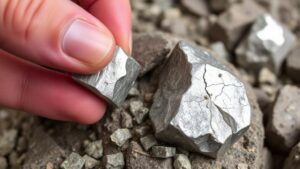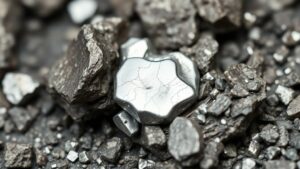Understanding Agricola’s Methods for Extracting Metals From Complex Ores
Understanding Agricola’s Methods for Extracting Metals From Complex Ores
Georgius Agricola, a seminal figure in mining and metallurgy during the Renaissance, laid the groundwork for the extraction of metals from complex ores. His comprehensive work, De Re Metallica, published in 1556, detailed various techniques and tools essential for separating metals from their ores. This article provides an in-depth examination of Agricola’s methods, highlighting their historical context, practical applications, and lasting influence on contemporary metallurgy.
The Context of Mining in Agricola’s Era
During Agricola’s time, mining was a burgeoning industry fueled by the demand for metals such as silver, copper, and iron. technological limitations of the era posed significant challenges in extracting metals from more complex ores that contained various impurities. Agricola’s methods arose in response to these challenges, representing a significant advancement in extraction techniques.
Crushing and Grinding of Ores
One of Agricolas foundational methods for extracting metals involved the crushing and grinding of ores. By reducing the ore into finer particles, the surface area increased, facilitating the subsequent extraction processes. Agricola recommended the use of hand-operated hammers and later water-powered mills to achieve this fragmentation.
- Crushing ores improved access to valuable metals hidden within the rock structure.
- Efficiency increased with the introduction of water mills, allowing for larger quantities of ore to be processed.
Washing and Concentration Techniques
Following crushing, Agricola emphasized the importance of washing to separate valuable metals from gangue (worthless mass). Techniques such as panning and sluicing utilized water to separate lighter materials from those of greater density. This method mirrored modern gravity separation techniques and laid the foundation for their development.
Case studies from Agricola’s time illustrate the application of these methods. For example, in the Erzgebirge region, miners successfully used sluices to quickly separate gold from sediment. Their success evidenced the effectiveness of Agricola’s methods in real-world scenarios.
Roasting and Smelting Processes
Agricolas work delved deeply into roasting and smelting, critical processes for extracting metals from ores. Roasting involved heating the crushed ore to alter its chemical structure, converting sulfides to oxides and facilitating further processing.
- Heat treatment reduced the sulfur content, making the ore more amenable to smelting.
- Through smelting, Agricola illustrated the use of furnaces that combined the roasted ore with a reducing agent to extract metals. This method was pivotal in the production of copper and lead.
The Role of Fluxes
Agricola’s methods also highlighted the application of fluxes, substances added during smelting to promote melting and remove impurities. For example, he recommended the use of limestone as a flux, which reacted with silica and other unwanted materials to form slag that could be easily removed. This technique is analogous to modern practices where borates are used as flux agents in metallurgy.
Innovations in Metallurgical Techniques
The approaches developed by Agricola paved the way for numerous innovations in metallurgical practices. His advocacy for laboratory analysis of ores laid the groundwork for modern assay techniques, enabling miners to accurately evaluate the metal content of ores before extraction. By emphasizing systematic approaches and repeatability, Agricola contributed to a more scientific understanding of metallurgy.
Legacy and Modern Applications
Agricola’s methodologies have profoundly influenced modern metallurgy. Many of his techniques, such as grinding, washing, and smelting, continue to be integral to contemporary mining operations. Advanced technologies, including flotation and leaching, have evolved from Agricola’s foundational principles, showcasing the enduring relevance of his work.
For example, in the mining industry today, automated grinding and flotation systems enhance efficiency and recovery rates, reflecting Agricola’s emphasis on maximizing metal yield from ores.
Conclusion
Georgius Agricola’s contributions to the field of metallurgy are irrefutable, with methods for extracting metals from complex ores forming a critical foundation for the industry. His systematic approaches, use of technological innovations, and emphasis on scientific analysis resonate even in todays mining and metallurgical practices. As we continue to refine these techniques, understanding Agricola’s principles serves as a reminder of the rich history that has shaped modern methodologies.
Actionable Takeaways
- Explore Agricola’s texts to gain insight into historical practices that inform current methods.
- Use modern variations of Agricola’s techniques in mineral processing for enhanced efficiency.
- Consider the role of scientific analysis in evaluating ore quality to inform extraction strategies.


